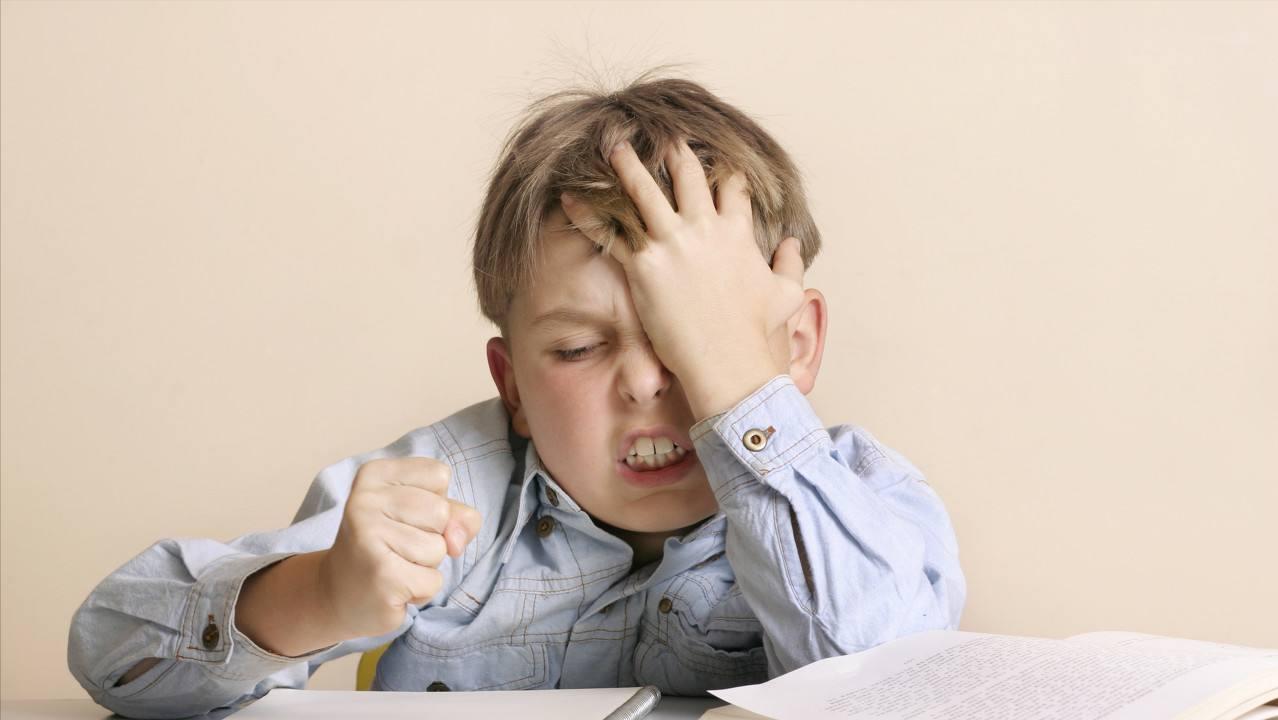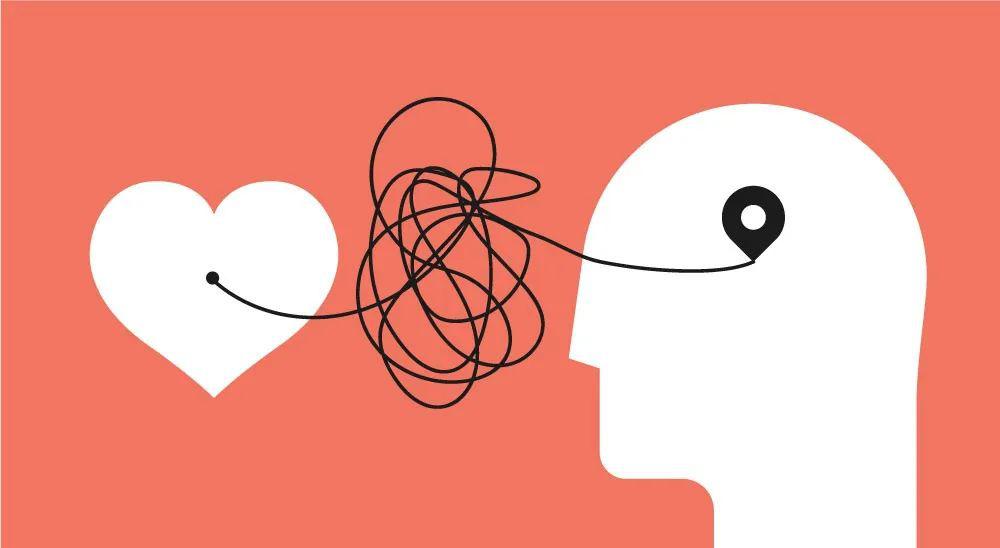Cultivate the most interesting and practical psychology every day.
Some people say that most of the emotions you can’t maintain well will have root causes.
Regardless of the root cause of this answer, psychology lovers should first make it clear that emotion is subordinate to attitude. Attitude, on the other hand, is a relatively stable psychological tendency held by individuals towards specific objects (others, ideas, emotions or events, etc.). This psychological tendency often contains individual’s subjective evaluation and viewpoint, as well as the resulting behavioral tendency.

Now we know that emotion is a part of the whole attitude. It is in harmony with introverted feelings, intentions and habits in attitude.It is a psychological state of "attitude", which is a complex and stable physiological feedback and experience in physiology.
The "emotion" we are usually familiar with includes not only the sense of morality, but also the sense of value. It is embodied in human behavior, that is, love, happiness, hatred, disgust, beauty and other life feelings or basic attitudes.
Psychology lovers often have the thinking and habit of exploring and analyzing the essence of things, and they know that the attitude (emotional state) understood by ordinary people is not the same as the emotional attitude studied in psychology.

Ordinary people often attribute their attitude and emotion to individual personality, experience and immediate feedback, but completely ignore the root of "attitude". On the basis of this misjudgment, people often make wrong judgments or interpretations of other people’s emotional states.
Therefore, in order to clearly understand people’s emotions, it is necessary to clarify the "attitude" that can cover emotions and all kinds of psychological connections involved.
In the history of psychological development, the definition of "attitude" was first put forward by psychologists Spencer and Bein in 1862. They believe that, from the psychological level, people’s attitude is a kind of opinion that comes out first, and it is a "preconceived idea" and psychological tendency that leads individual judgment and thinking to a certain direction, that is, our daily psychological preparation.

On this basis, influenced by behaviorism in psychological research in 1930s, psychologist allport updated his predecessors’ analysis and judgment on attitude. He believes that people’s attitude is essentially a state of psychological and nervous preparation.
It is mainly organized through people’s life experience, and this "psychological and nervous preparation state" organized through experience affects the individual’s response to the situation. Obviously, allport’s definition emphasizes the role of individual experience in the formation of psychological attitude.
In 1948, psychologist Kreiger proposed that from the psychological point of view, it must be clear that attitude is actually the persistent organization of individuals’ motivation, emotion and perception of certain social phenomena in their daily lives. Like allport, Kreiger’s definition of attitude still emphasizes people’s subjective experience in the present.
However, more advanced than allport, Kreiger regards people as individuals who can think and actively construct things, rather than just passive life experiences.
In 1984, American psychologist Barker made a new conclusion about the concept and definition of "attitude".He believes that "attitude" is actually a psychological tendency of people to others, ideas or things. But he also stressed that people’s attitude is a subjective thing of ideas and opinions.
In modern times, psychologist Myers updated the definition of "attitude" again in 1993, and was recognized as a relatively perfect formulation of attitude so far. Myers believes that from the perspective of psychology, "attitude" is an "evaluative response" that people like or dislike something or someone, and this response is often manifested in people’s beliefs, emotions and tendencies.
Tracing back to the source, we clarify the connotation and extension of "attitude" and the development process of concept definition, mainly to explain the theme of "emotion" After all, emotion is contained in "attitude" and is a part of attitude. If you want to understand emotion and related problems, you should first understand the causes of emotion from the root.
If you look at the individual from the whole, you will obviously come to a biased conclusion; And only look at the overall (attitude) characteristics, but do not carefully analyze the individual (emotional) details, naturally can not see the whole picture of things.
Psychologist Myers believes that people’s attitude will inevitably involve three dimensions: emotion, behavioral intention and individual cognition. As mentioned above, the "emotion" that we usually think is the most familiar and understandable is a part of the whole self-attitude, which is in harmony with the introverted feelings and intentions in the attitude.In fact, individual emotion includes two aspects: moral sense and value sense, which are embodied in subjective feelings and experiences such as love, happiness, hatred, disgust and beauty in daily life.
From the perspective of value goal, people’s emotional expression can be divided into four categories: feelings for things, feelings for people, feelings for themselves and feelings for special things.
If we look at people’s emotions from a changing perspective, then people’s feelings about foreign things depend on the changes and tenses of their own values.According to the different ways and tenses of their own values, the ways people treat emotions can be divided into five specific forms:
Value Increase-Emotional Attitude: Pride
Reduced value-emotional attitude: shame
Value Increase-Emotional Attitude: Embarrassment
Future Value Increase-Emotional Attitude: Self-confidence
Future Value Decrease-Emotional Attitude: Inferiority
Darwin, an evolutionist, believes that the state of human organism and the development of biological organism are both a process of continuous evolution. This evolution process is embodied as follows: the biological species are constantly differentiated and increased,The cell structure in organisms has become more and more complex but more orderly, and the organizational function of organisms has been deepened and strengthened.
Obviously, as a subjective emotion, the emotional development of human beings is also a process of continuous evolution. This evolution is embodied in:
The manifestations of human emotions are constantly differentiating and increasing.
The hierarchical structure of emotion is increasingly complex but more orderly.
The behavior-driven ability of emotion has been constantly evolving and strengthened.
From Darwin’s theory of evolution, we can find that in the process of analyzing human emotions, if we apply the basic ideas of dialectical materialism and biological evolution to the emotional field together, a more scientific concept and judgment method of emotional evolution will be formed.
In this sense, the establishment of a "scientific theory of emotional evolution" by individuals is not only helpful for exploring the "logical structure" and "operational mechanism" of emotions and realizing "scientific emotional calculation and judgment", but also for the survival and quality of life of biological individuals.
In the long run, in today’s intelligent AI, scientific emotional concepts and judgment methods are also of great theoretical significance for scientists to develop emotional robots in the true sense.
We know that,Emotion is a subjective reflection of people’s value relationship. Therefore, the evolution and change of human emotion fundamentally originates from and depends on the evolution of value relationship in reality, that is, the evolution of human value relationship, which promotes the evolution of human emotion.
Objectively speaking, the development process of human value relationship is not only a slow quantitative change process, but also a changing process in which rapid qualitative change may occur. No matter from which aspect, it is a long, tortuous, natural, hierarchical and phased evolution process.
Therefore, if we look at the history of human emotion and its development from different dimensions, such as individual and society, individual and others, we will find that it is unscientific and idealistic to arbitrarily and unilaterally regard "emotion" as a unique thing of someone.
It is also mechanical and dogmatic to divide emotional simplicity into instinctive and dynamic categories. There is an inseparable relationship between emotion and social development, and between emotion and individual experience.
From reality, we can infer that the value relationship between people is in the process of continuous evolution.. Moreover, this evolutionary process can be divided into five basic stages:
Single factor value
Multi-factor value
Variable value
Diversity valueMulti-layer value
On the basis of this reality, there will be five stages of natural evolution of human emotions:
- 1. Sexual emotion
- 2. Rigid emotions
- 3. Flexible emotions
- 4. Intellectual emotion
- 5. Rational emotion
Thus, emotion is a process of dynamic change and development, not a static process. In the development direction of emotional evolution, emotion is also manifested in the continuous differentiation and integration of emotion and individual cognition:
In the stage of sexual emotion, people’s cognition and emotion are completely confused and integrated;
In the rigid emotional stage, although people’s cognition and emotion are still in a state of confusion, they begin to show a trend of separation gradually;
In the stage of elastic emotion, people’s cognition and emotion will be further separated, and a new outline will gradually appear;
In the stage of intellectual emotion, people’s cognition and emotion begin to develop independently;
In the stage of rational emotion, people’s cognition and emotion can not only develop independently, but also integrate freely.
From the above classification, although emotion is always the subjective reflection of the human brain on the value relationship, it will continue to evolve and develop under the influence of various changes in reality, and its development and evolution direction fundamentally depends on the development direction of the value relationship in reality.
To sum up, we have described the physiological principle and dynamic evolution characteristics of emotion, and clearly understand that human emotion is not emotion, but a kind of physiological feedback and experience that changes and develops with the value relationship in reality.
In real life, many people lament that they can’t maintain a relationship, and it is easy to attribute the reason to the evolution of the other party and their own persistence, or other external reasons. In fact, emotion is an evolutionary process that constantly changes with the external environment, and it will not always stick to a certain state.
If we can establish a "scientific theory of emotional evolution", clearly know and explore the "logical structure" and "operational mechanism" of emotions, and realize "scientific emotional calculation and judgment", then we will avoid falling into daily physiological emotions and making misjudgments or misjudgments in emotions.It is no exaggeration to say that 99% of emotional problems can be solved in these ways.
– The End –
Author | Magic Little
Edit | A grain of rice
A group of young people who like to look up at the stars
References: Alfred Adler, translated by Zhou Lang. What does life mean to you [M]. International Culture Publishing Company, 2000.
Wechat WeChat official account: the first psychology
关于作者